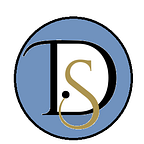Be Very Cautious While Creating Your Resume.
Your future ultimately lies in your hands
Trust me possessing a strong understanding of your field isn’t the sole determining factor in your selection.
Your resume plays a crucial role as it presents the first impression. It showcases your knowledge, organizational skills, and clear communication abilities which entice the interviewer to delve deep into you.
I suggest you the following books on Resume Preparations:
- ‘Interview Preparation’ authored by Tony Beshara, the esteemed owner and President of Babich and Associates, a leading job placement firm.
- ‘Gallery of Best Resumes’ authored by Davis F. Noble
- ‘Best Resumes and Letters’ authored by Wendy S. Enelow and Ronald L. Krannich.
They offer a plethora of illustrations and examples for reference, which could be beneficial undoubtedly. However, this must be time-consuming. Here, In this blog, I’ve summarized the key points and integrated them with my personal experiences to compile a list of do’s and don’ts for crafting a resume.
Work Experiences :
- Always opt for a reverse chronological format, starting with your current or most recent job and then listing previous experiences in descending order.
- Both format paragraphs and bulleted lists are effective; choose based on content and layout preferences. But, Bullet points must convey specific, meaningful performance qualities to be effective.
- Please provide the full name of your employer always.
- Use language that a high school senior can understand.
- Never mention the reasons for leaving your previous jobs.
- Do not include your salary-related information.
References or Endorsements:
It’s better to leave if they are not from high-profile people.
Projects:
Provide a GitHub link for the code repository and explain key points in bulleted format, starting with verbs without using “I” every time.
Achievements:
For freshers, including such experiences is crucial. Mention scholarships, sports achievements, or certificates held. However, experienced individuals may find these details unnecessary and can avoid simply.
Certifications:
If you’ve obtained certifications, be sure to include them as well. It plays a great role. In addition to, be ready to answer if they ask questions from that.
Year gap:
In your resume, you don’t need to explicitly mention any gaps in your employment history. They will find out. However, during the interview, you can discuss any training, educational programs, consulting work, or other relevant experiences you pursued during that time. If necessary, you can also mention health-related issues. Authenticity is the key here.
Photograph:
Including a photograph is debatable. Many experts advise against including a photograph, preferring to focus on showcasing your work and allowing the interviewer to visualize your capabilities.
To do:
i. Ensure that the font is Arial, Verdana or Times New Roman.
ii. You can use small bullets so that it does not look messy.
iii. while using uppercase or italic — make sure it looks good, not odd.
iv. Make sure, there is no spelling mistake.
v. Be consistent in your use of line spacing.
vi. Target your Resume- Customize to the specific job you are applying for. Create 2–3 types of Resume. Your resume should vary depending on the position you’re applying for; for example, if you’re applying for roles like Data Engineer, Data Analyst, or Data Scientist, your resume must change accordingly.
v. Nowadays, we typically email these documents, but you’ll need to provide a hard copy. Please print it on one side of the paper only.
Don’t:
- Don’t include your personal information. Include the things they need to know like your address.
- Do not include your hobbies in your Resume. (But be prepared for the interview).
- An unusual presentation may be the recipient but will likely eliminate your Resume automatically. Hence, please maintain
i. Simple format- clean white pages
ii. No colored paper
iii. No cutesy background
iv. no traditional script
v. no flowers in the margins
5. No one has time to read a 7-page resume, so aim to keep it concise, ideally within 1–2 pages.
Some Tips:
A. Create a portfolio website showcasing your skills and achievements. Learn how to design and deploy it for free using Github.
A. While sending any mail, make sure you add an attractive subject line in the body.
B. Connect with a wide range of people on LinkedIn, including former colleagues, peers, subordinates, alumni, association members, fraternity, and fellow students from your college or university.
Leave no stone unturned.
C. Creating an exceptional resume requires time and effort, so don’t hesitate to revise it multiple times until it’s polished and highly effective. Put yourself in the interviewer’s shoes and evaluate your resume critically. Make adjustments based on what you wouldn’t prefer to see as an interviewer. Be your own judge.
Like an engaging movie trailer, your resume should captivate attention and leave the reader eager to learn more.
Lastly, remember there’s no one-size-fits-all approach to resume writing. Ensure it’s authentic and visually appealing.
All the Best.. :)
If You are preparing for Data Science, this is the roadmap for you.
If you found this guide helpful , why not show some love?
Give it a Clap 👏, and if you have questions or topics you’d like to explore further, drop a comment 💬 below 👇
